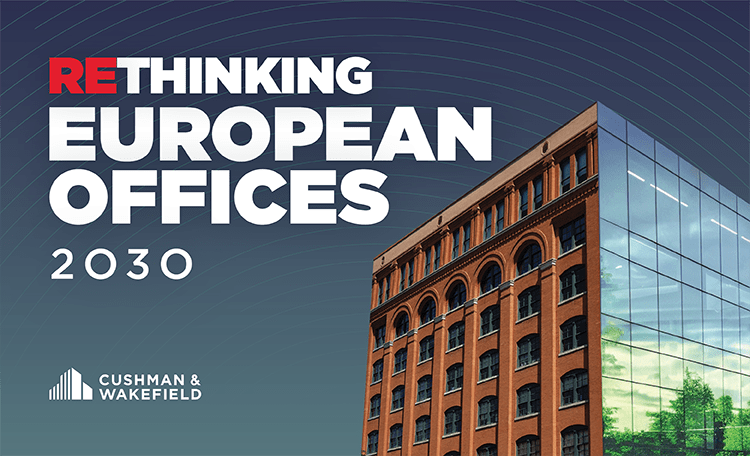According to ‘Main Streets Across the World’, the latest retail report from Cushman & Wakefield, London's New Bond Street has overtaken last year's leader Via Montenapoleone in Milan (unchanged at £17,000/m²/year) and Upper Fifth Avenue in New York (also unchanged at €18,359/m²/year), making it the most expensive retail destination in the world for the first time.
Robert Travers, Head of EMEA Retail bei Cushman & Wakefield, adds: "The enduring appeal of the world's leading shopping streets lies in their unique combination of tradition, visibility and cultural prestige. They are much more than just retail space – they serve as global stages for brand staging, architectural expression and emotional customer loyalty. Securing a place there requires creative strategies and innovative strenght."
Global rental price trends
Rents rose by an average of 4.2% worldwide, with 58% of the markets analysed recording rental growth. The Americas led regional rental growth with +7.9%, driven by currency effects in South America. Europe grew by 4%, with Budapest and London particularly noteworthy. In the Asia-Pacific region, rental growth slowed to +2.1%.
Regional overview
Europe: London remains the growth engine
In addition to New Bond Street, Oxford Street and Regent Street in the British capital also recorded double-digit growth. In Budapest, rents on Fashion Street rose by 33%, replacing Váci utca as the city's leading shopping street. Milan and Paris maintained their global relevance with stable rents on Via Montenapoleone (€20,000/m²/year, 2nd place worldwide) and the Champs-Élysées (€12,519/m²/year, 5th place).
Germany's top shopping streets rank in the middle of the European league table
Germany's most expensive shopping street remains Kaufingerstraße/Neuhauserstraße in Munich, at €3,840/m²/year. In the global ranking of the most expensive streets (only the top-ranked shopping mile per country), the central shopping street in the Bavarian capital remains in the top 20 (ranked 14th).
In a Europe-wide comparison of the top destinations, Munich stands out not only with the aforementioned Kaufingerstraße/Neuhauserstraße (ranked 24th here), but also with Maximilianstraße, with a peak annual rent of €3,360/m²/year (ranked 27th). The top German locations also include Tauentzienstraße in Berlin, Zeil in Frankfurt, Spitalerstraße in Hamburg and Königsallee (Kö) in Düsseldorf. The prime rents here remained unchanged from the previous year at €3,000/m²/year, equivalent to a joint 30th place in the European ranking.
Flagship locations defy uncertainty
Prime retail locations continue to perform above average – despite economic uncertainty and changes in consumer behaviour. Interest rates remain high, but inflationary pressure is easing and central banks have scope for further interest rate cuts. Combined with stabilising consumer sentiment, real wage growth and a recovery in international tourism, this should give the retail sector a boost in the coming year.
Andreas Siebert, Head of Retail Germany at Cushman & Wakefield: "Flagship locations are benefiting from a number of positive prospects, including robust economic growth, falling living costs and a return to consumer confidence. The importance of physical retail space – especially for emotional brand loyalty – remains high. We expect this trend to strengthen further as global conditions improve.‘
Siebert continues: ’Even in the top locations in German cities mentioned above, we can say in many respects that they are proving resilient to economic and geopolitical uncertainties. Low vacancy rates and strong interest from German and international, and now often Asian, providers underscore this. In the last two years, numerous new retailers – including international brands – have leased space in central locations in German cities, further highlighting the attractiveness and resilience of these locations. Brands such as Uniqlo in Berlin, Düsseldorf and Frankfurt, Muji, JD Sports, Rituals, Lululemon and new restaurant concepts such as Pret A Manger and Five Guys have expanded their presence in central city centre locations or opened new locations. In addition, Lidl has further developed its strategic partnership with Galeria and announced new stores in prominent city centre locations such as Hamburg and Düsseldorf."
Prime retail locations continue to perform above average – despite economic uncertainties and changes in consumer behaviour. Interest rates remain high, but inflationary pressure is easing and central banks have room for further interest rate cuts. Combined with stabilising consumer sentiment, real wage growth and a recovery in international tourism, this should give the retail sector a boost in the coming year.
Andreas Siebert, Head of Retail Germany at Cushman & Wakefield: „Flagship locations benefit from a number of positive prospects, including robust economic growth, falling living costs and a return to consumer confidence. The importance of physical retail space – especially for emotional brand loyalty – remains high. We expect this trend to strengthen further as global conditions improve.‘ Siebert continues: ’Even in the top locations in German cities mentioned above, we can say in many respects that they are proving resilient to economic and geopolitical uncertainties. Low vacancy rates and strong interest from German and international, and now often Asian, providers underscore this. In the last two years, numerous new retailers – including international brands – have leased space in central locations in German cities, further highlighting the attractiveness and resilience of these locations. Brands such as Uniqlo in Berlin, Düsseldorf and Frankfurt, Muji, JD Sports, Rituals, Lululemon and new restaurant concepts such as Pret A Manger and Five Guys have expanded their presence in central city locations or opened new locations. In addition, Lidl has further developed its strategic partnership with Galeria and announced new stores in prominent city centre locations such as Hamburg and Düsseldorf."
Americas region leads with average rental growth of 7.9%
Oscar Freire Jardins in São Paulo recorded an increase of 65% and climbed seven places in the global ranking. Growth in the USA was more moderate at 2.5%. While Upper Fifth Avenue remained stable, Madison Avenue and SoHo grew by over 8%, offering attractive value for money with rents 30-50% lower. In Canada, Robson Street in Vancouver recovered with a 20% increase after a decline in the previous year.






